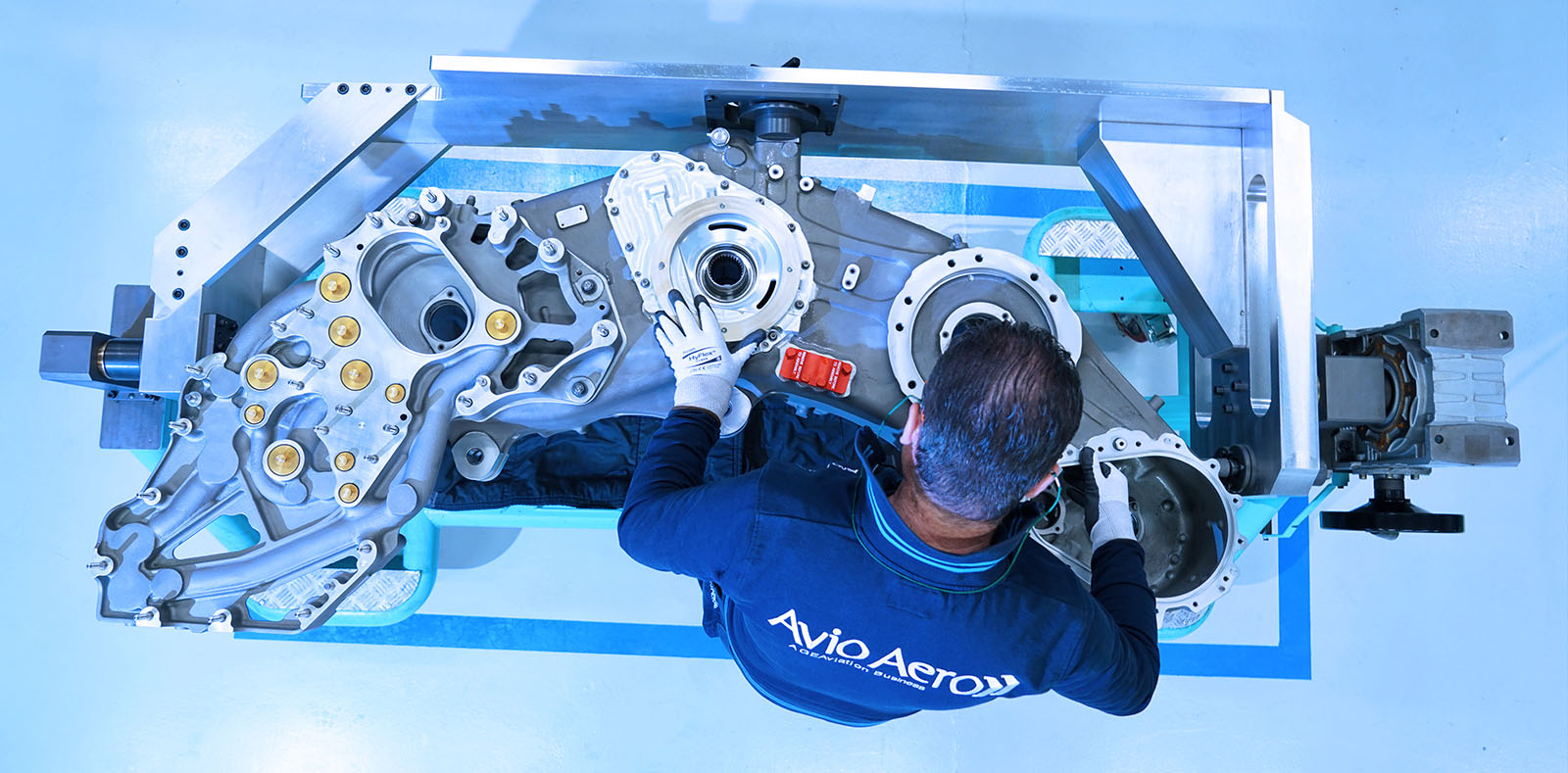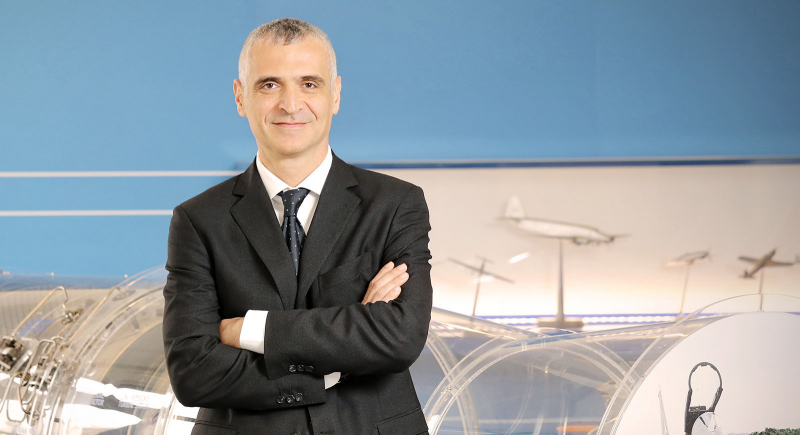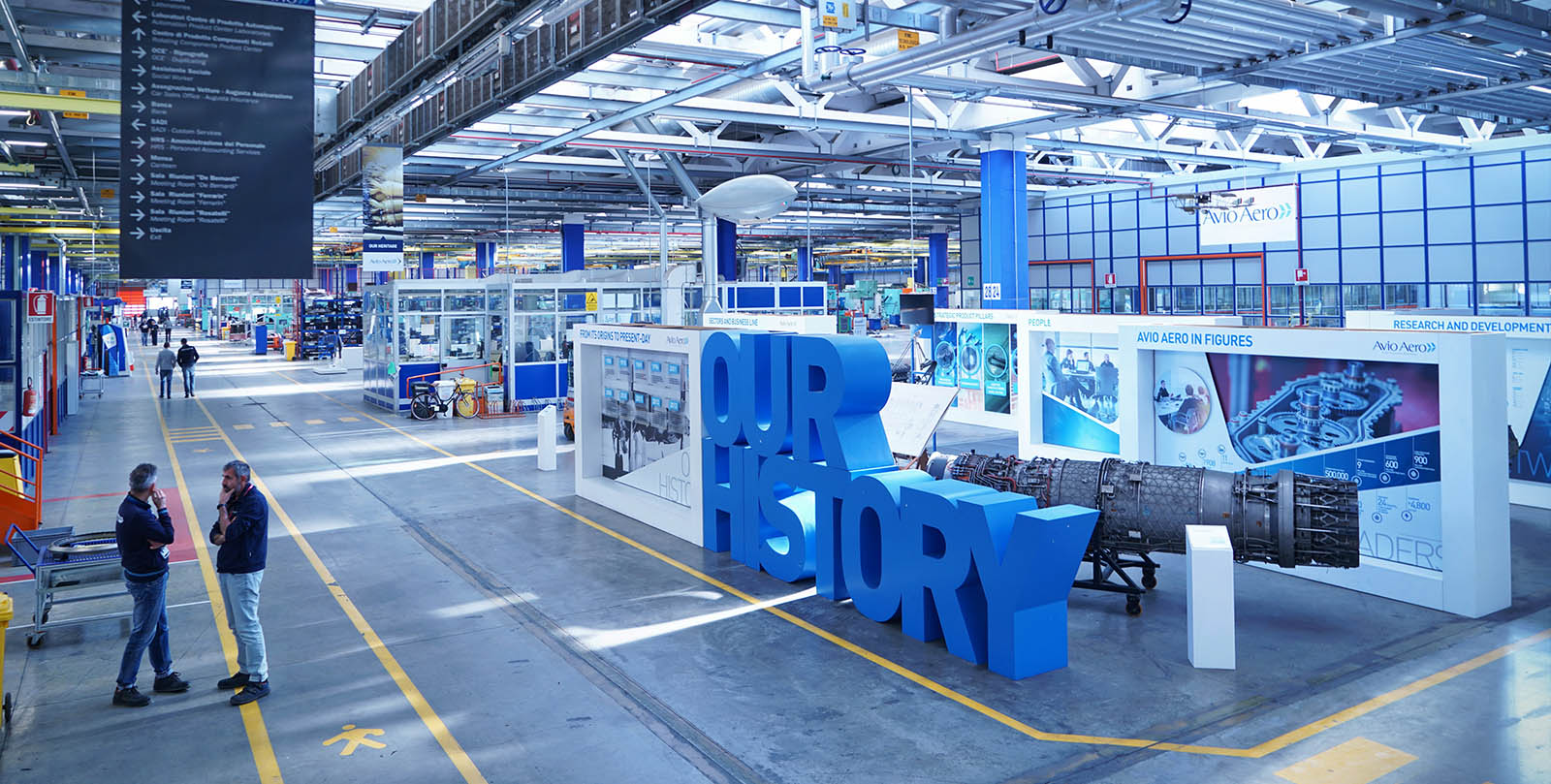Humans
Rising Avio Aero
The pandemic has made the leadership pause and reflect on how to steer the company and its employees in a way to govern change and make the most of its resources.
Dec 2020
As often happens in history, a big or small event can lead to a radical change in business scenarios and human behavior. The year 2020 undoubtedly represents a watershed between the world we have known and experienced so far and a new time the contours of which are still blurred.
"In these months we have focused so much on what COVID-19 has taken away from us," said Carlamaria Tiburtini, HR Business Partner and Inclusion & Diversity Leader of Avio Aero. “Now is the time to open our eyes and become aware of what it has given us. Civil society is converging on the concept of rebirth, and companies are also becoming aware of possible new opportunities." These opportunities are ones that affect everyone's role within their organizations and relate to the immense value of collective contribution.
The pandemic has, more than anything, made leaderships pause to reflect and decide on how to guide their companies in a way that allows them to play an active rather than passive part in change. "Those who work in the manufacturing sector are familiar with the principles of Lean Management which - once extended to the entire organization - become a real culture where the leaders, at the bottom of the pyramid, put themselves at the service of their collaborators to help them grow in terms of both performance and professionalism,” Tiburtini added.
“There is what we call servant leadership. It’s not about being servile, but rather it is based on the availability of management and the responsibility of the employee.” Avio Aero is a company that is undergoing enormous transformation and these two characteristics are key to the managerial approach it is embracing.
"What we call Servant Leadership it’s not about being servile, but rather it is based on the availability of management and the responsibility of the employee”
According to Riccardo Procacci, CEO and General Manager of Avio Aero and CEO of GE Additive, “It is the difference between having a few thinking heads that give orders to the company - in our case thousands of units - and over 5000 heads and hearts that passionately work every day to ensure its success." It is a disruptive force, understood as the volume of ideas and capacity generated to support the business. For Avio Aero, Mr. Procacci recalled that the path taken to adopt this model began well before the contingent necessity, and was almost a matter of "life or death".
"Following the acquisition by GE, the company experienced a profound identity crisis deeply rooted in processes that led to a radical renewal of supply chain leadership and quality. Due to the absence of managerial resources, the production chain was coming to a standstill. It was possible to put the company back on track again only with the adoption of the inverted pyramid model, and by convincing the team that we - the new leadership - were at their service, and there was no problem that could not be solved with dialog, transparency and collaboration,” commented the CEO of Avio Aero.
“It is clear that in order to implement this model of leadership, the leader needs to develop not only the usual skills of vision, foresight and understanding of the market and customers, but also empathy, the ability to connect and communicate at all levels of the organization, as well as the ability to perform the operational synthesis necessary to transform precise input into actions of broader scope. It is also clear that a leader who sees the success of his or her employees as the means to achieve the success of the entire organization cannot avoid playing the role of a coach, which he or she must do every time they come into contact with the organization and the people. The concept here also ties in very much with Lean Management.”
This approach discredits the idea of success relating to power and personal recognition, promoting instead a bold and innovative idea of gratification derived from sharing results with one's employees. It is a different style of leadership which does away with the classic dynamics of the boss who commands the employee and sees him or her as a "resource to be managed to achieve their goals," and instead is simpler and requires the boss to be more humble and see his or her resources as essential contributors, and to take care of their growth and achievement on a personal as well as a professional level.
The effect of this model on the company consists of having understood the importance of focusing not only the customer, but also on the employee. In this way the employee is more committed to the company and its development and to the customer’s true satisfaction.
“The intuition to follow a path to develop a sense of belonging with specific employer branding actions was certainly the glue that held the company together during the emergency,” Tiburtini added. “Sharing responsibility - the real engine of inclusion - made everyone feel like they were playing an active part. It was a journey undertaken together with the leadership and the Communication department, in order to involve the whole community. Every transformation implies, by definition, a cultural change. The fear of the new is great, as is natural resistance: this is the main area of focus in which we continue to work.”
“To implement this model of leadership, the leader needs to develop not only the usual skills of vision, foresight and understanding of the market and customers, but also empathy at all levels of the organization, as well as the ability to perform the operational synthesis"
The health emergency has also drawn attention to the importance of collective intelligence, certainly in the scientific field, but also within organizations. Collaborative dynamics have been one of the tools available to the leadership to cope with the emergency. "This type of approach must be cultivated also in the future,” said Tiburtini. “It’s easy to imagine how the theme of collective intelligence is increasingly becoming the object of attention not only of researchers and academics, but also of professionals and all those who will have to devise new solutions to the problems that are emerging.”
In fact, the spread of communication techniques, new technologies and above all artificial intelligence are leading to the birth of new forms of social interaction that are no longer based on territorial belonging, institutional relations, or power relations, but on gathering together around common centers of interest.
According to Tiburtini, collective intelligence is the potential of the organization that must be unleashed. Intelligence can be found everywhere, also thanks to the pervasive role of social media, and must be developed and coordinated in real time in order to mobilize skills. The role of the individual is key to forming a collective intelligence, with every individual starting from himself or herself and working according to the logic of continuous improvement and with a growth mindset that fosters his or her community. Pierre Lévy, the theorist of collective intelligence, maintained that “nobody knows everything, everybody knows something" and only by sharing knowledge can development take place.
"From the point of view of Human Resources, the concept of collective intelligence is the answer to the request of leaders who are asking for a systemic vision and, at the same time, it is a precious source for attracting new talent. Today - especially among the new generations - the workers are who choose and engage with the companies that are best able to value their work, and therefore companies should take the opportunity to rethink their models to encourage such behavior. The model becomes more horizontal, with a flexible approach which gives workers considerable autonomy in organizing and managing their work. It is freedom that develops people and at the same time invests them with greater responsibility towards the company and their work.”
“With this in mind, our role as HR has also had a great opportunity for transformation. Rather than simply offering support we have become fully-fledged agents of change able to help our leaders to be the ones that the company needs in this time of contingency, and to help employees find the motivation to achieve goals and increase their pride in the company. For it to be authentic, the change must be shared by the entire organization. We have based our transformation on servant leadership and employee participation and we are only at the beginning of the path,” Tiburtini concluded.
The original version of this article il by AIDP magazine's: DdP Direzione del Personale num 195 / Dec 2020








